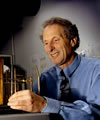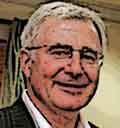 When the NZ Climate Science Coalition lost its court case against the New Zealand temperature record last year, the NZ Herald — the newspaper of record for NZ’s largest city — ran an editorial pointing out the stupidity of the climate cranks tactics. It went on to criticise the views of Auckland University’s Chris de Freitas — a man with a long history of distorting the facts about climate science — expressed in an opinion piece on the judgement published in their own paper. Two years ago the Herald also broke the news that de Freitas was teaching climate denial to first year university students.
When the NZ Climate Science Coalition lost its court case against the New Zealand temperature record last year, the NZ Herald — the newspaper of record for NZ’s largest city — ran an editorial pointing out the stupidity of the climate cranks tactics. It went on to criticise the views of Auckland University’s Chris de Freitas — a man with a long history of distorting the facts about climate science — expressed in an opinion piece on the judgement published in their own paper. Two years ago the Herald also broke the news that de Freitas was teaching climate denial to first year university students.
You might think that those experiences would have left the paper a little wary about giving de Freitas a platform in its pages, but it appears that the newspaper is a slow learner. This morning, the Herald carried another opinion piece by de Freitas under the headline Science proves alarmist global warming claims nothing but hot air, a response of sorts to an opinion piece by Jim Salinger that appeared in Friday’s paper. Here’s the opening sentence:
Several aspects of Jim Salinger’s op-ed “Climate hurtling towards a hothouse Earth” (Herald 24/5/13) are quite misleading.
Unfortunately for the reputation of the Herald, de Freitas goes on to be more than “quite misleading”: he tells a remarkable number of straightforward lies about our understanding of climate change. It appears that the newspaper believes it’s acceptable to print lies when they masquerade under the flag of opinion.
Continue reading “Hypocrisy at the NZ Herald: de Freitas given platform for more climate lies”

 This op-ed by climate scientist Jim Salinger first appeared in print editions of the New Zealand Herald last Tuesday.
This op-ed by climate scientist Jim Salinger first appeared in print editions of the New Zealand Herald last Tuesday. The New Zealand government has announced that the country will not join the second commitment period of the Kyoto Protocol (CP2), but will instead make voluntary commitments within the Kyoto framework [
The New Zealand government has announced that the country will not join the second commitment period of the Kyoto Protocol (CP2), but will instead make voluntary commitments within the Kyoto framework [ Climate scientists want to monitor how climate is changing and global warming progressing. This is particularly pertinent as this week the New Zealand Climate Science Education Trust are currently being heard in the Auckland High Court to try to persuade a judge to invalidate New Zealand’s temperature records which have been compiled and collected by the National Institute of Water and Atmospheric Research and the former government agencies. The coalition asserts the only way NIWA can claim a warming trend of 1°C over the past century is by cooking the books.
Climate scientists want to monitor how climate is changing and global warming progressing. This is particularly pertinent as this week the New Zealand Climate Science Education Trust are currently being heard in the Auckland High Court to try to persuade a judge to invalidate New Zealand’s temperature records which have been compiled and collected by the National Institute of Water and Atmospheric Research and the former government agencies. The coalition asserts the only way NIWA can claim a warming trend of 1°C over the past century is by cooking the books.